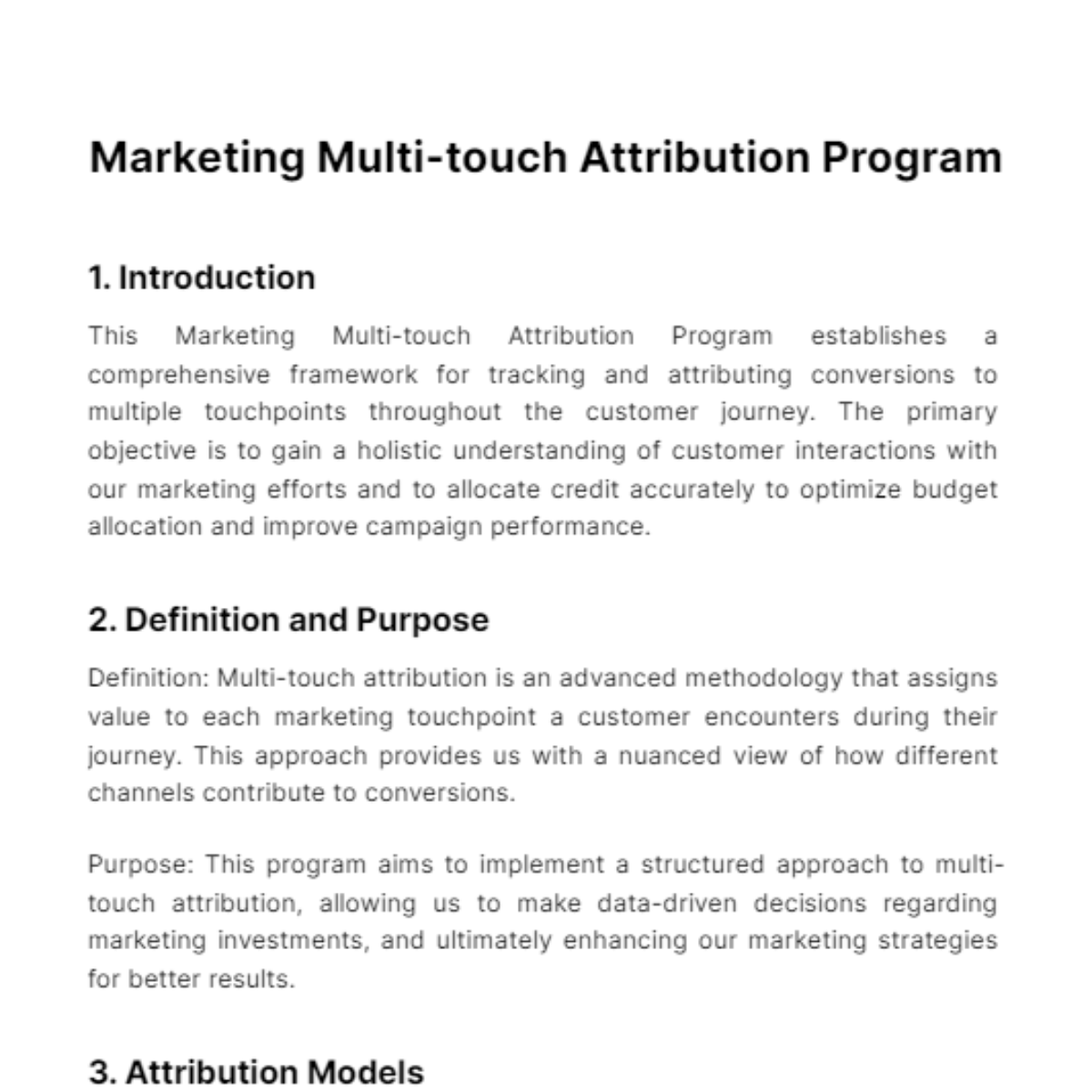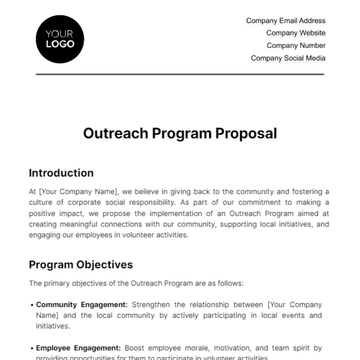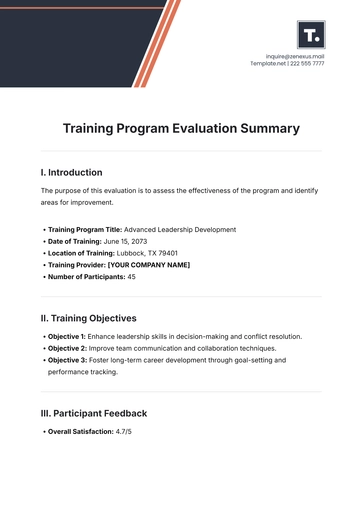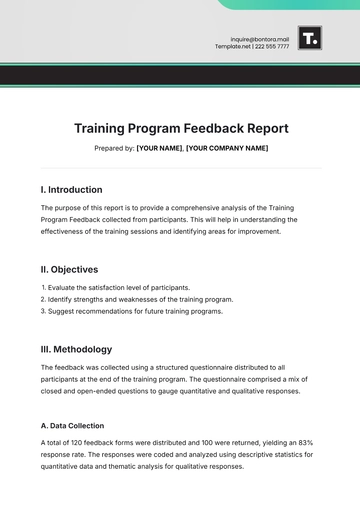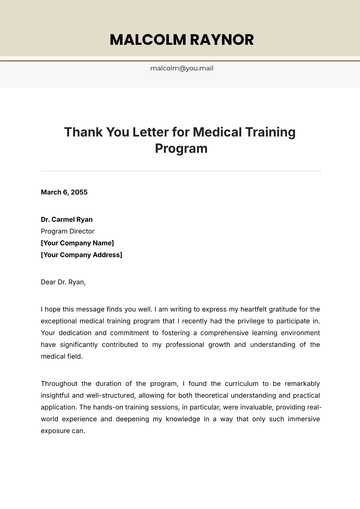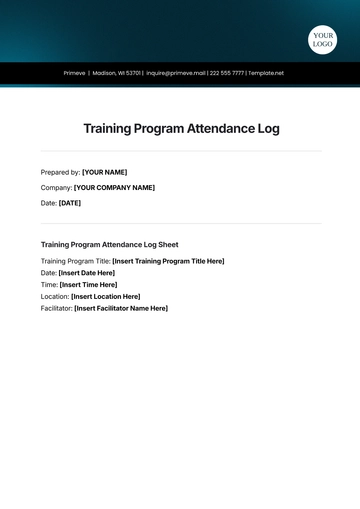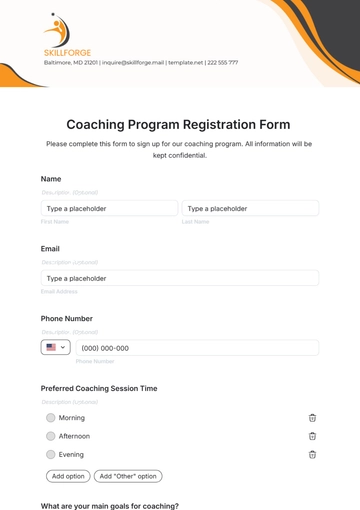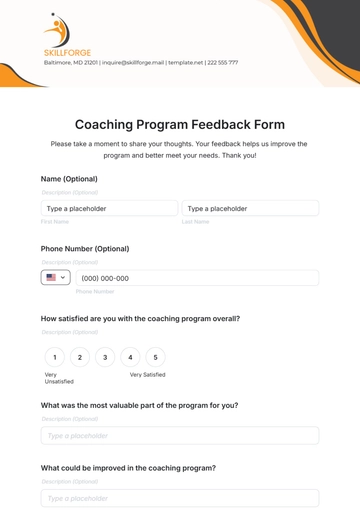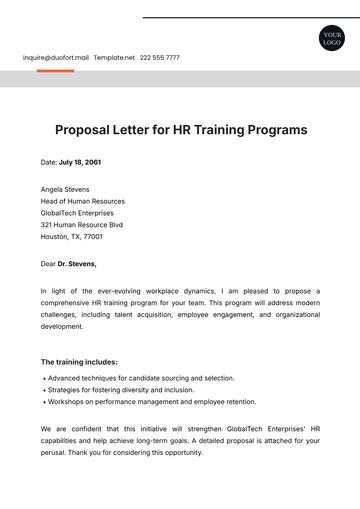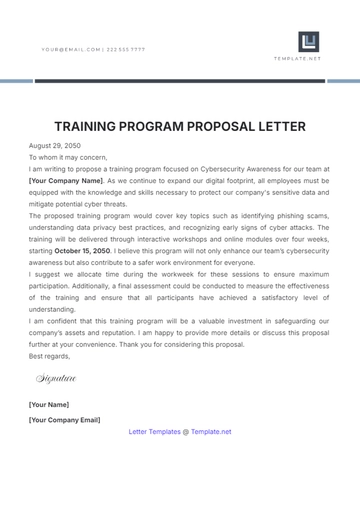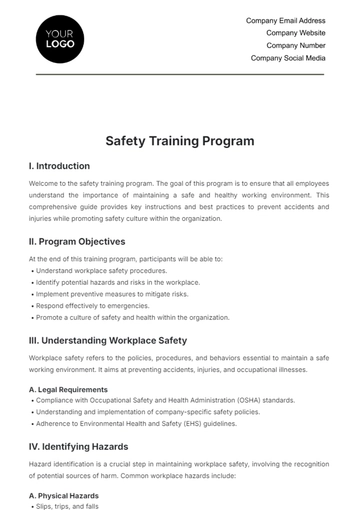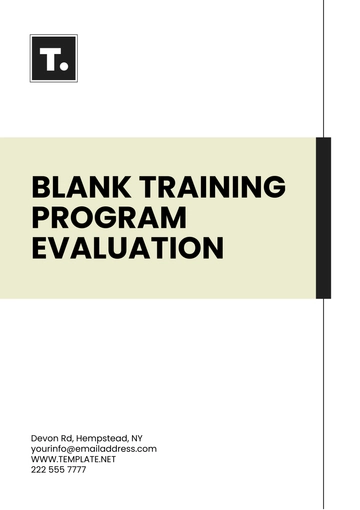Marketing Multi-touch Attribution Program
1. Introduction
This Marketing Multi-touch Attribution Program establishes a comprehensive framework for tracking and attributing conversions to multiple touchpoints throughout the customer journey. The primary objective is to gain a holistic understanding of customer interactions with our marketing efforts and to allocate credit accurately to optimize budget allocation and improve campaign performance.
2. Definition and Purpose
Definition: Multi-touch attribution is an advanced methodology that assigns value to each marketing touchpoint a customer encounters during their journey. This approach provides us with a nuanced view of how different channels contribute to conversions.
Purpose: This program aims to implement a structured approach to multi-touch attribution, allowing us to make data-driven decisions regarding marketing investments, and ultimately enhancing our marketing strategies for better results.
3. Attribution Models
Linear Attribution: This model assigns equal value to all touchpoints, providing an unbiased view of each channel's contribution. It is particularly useful for understanding the broad influence of various channels in the customer journey.
Time-Decay Attribution: Recognizing that touch points closer to conversion have a more significant impact, this model attributes increasing value to later interactions, acknowledging their role in sealing the deal.
First-Touch Attribution: This model attributes conversions primarily to the first touchpoint a customer encountered, acknowledging its role in introducing the customer to our brand.
Last-Touch Attribution: It assigns the majority of conversion credit to the last touchpoint before conversion, acknowledging its role in finalizing the decision.
Custom Attribution Model: To align with our unique business needs and goals, we will develop a custom attribution model tailored to our specific customer journey and marketing strategy.
4. Data and Tools
Data collection will be facilitated through [Analytics Tool], allowing us to monitor customer interactions with our various marketing channels.
Our Customer Relationship Management (CRM) system will be integrated to provide a unified view of customer touchpoints and interactions.
5. Implementation
We will establish a clear and consistent tagging system for tracking touchpoints across different marketing channels. This ensures that every interaction is recorded and attributed correctly.
Within the Analytics Tool, we will configure and implement the selected attribution models to process and assign credit to each touchpoint.
Regular monitoring and analysis of attribution reports will provide us with insights into the effectiveness of our marketing channels and campaigns.
6. Reporting and Analysis
We will create detailed reports that illustrate how different attribution models impact marketing performance. These reports will be shared with the marketing team and relevant stakeholders.
In-depth analysis of these reports will enable us to make informed decisions regarding budget allocation and campaign optimization.
7. Review and Updates
The program will be reviewed on a [e.g., quarterly] basis to ensure it remains aligned with our evolving marketing strategies.
Updates and adjustments will be made as needed to adapt to changing consumer behavior and market dynamics, ensuring our attribution models remain relevant and effective.
8. Training and Education
We will organize training sessions for the marketing team to ensure they fully understand and can effectively implement multi-touch attribution strategies.
Staying informed about industry best practices and emerging tools for attribution modeling will be an ongoing commitment to keep our program at the forefront of marketing innovation.
Marketing Templates @ Template.net
